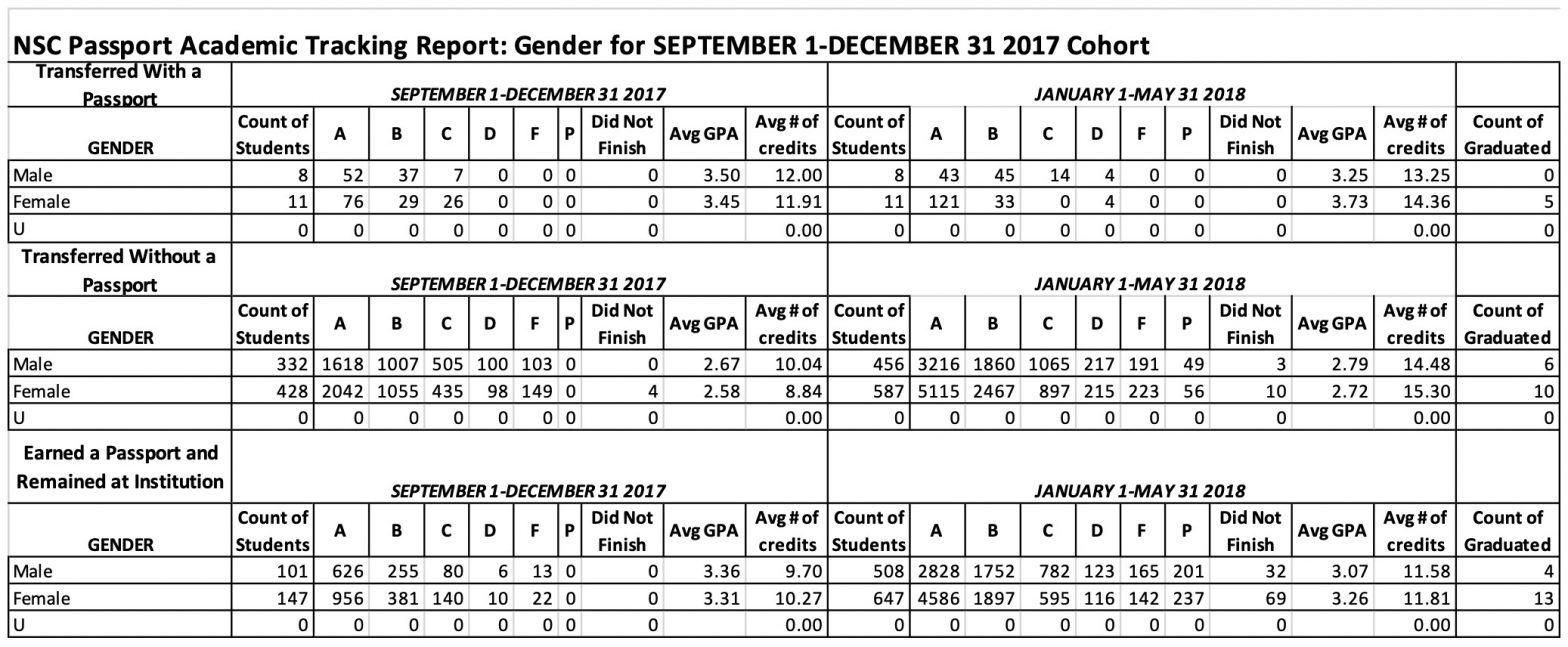By Michael Torrens, director of institutional research and accreditation, Utah State University
In the last two months, I’ve really discovered the value of Interstate Passport’s Academic Progress Tracking (APT). I’d like to make the case that it’s truly worth the upfront effort by participating institutions to get it programmed, to start, and to continue, reporting.
When Utah State University first embarked on developing our APT processes, there was some concern and resistance. It required dedication of some programming resources, and even once up and running, it was not that uncommon that the reporting process would require a couple of re-submissions to resolve errors created by inconsistent data in the SIS (e.g. stray spaces, punctuation, etc.). Having now had the opportunity to download our raw data from the National Student Clearinghouse (NSC) this January, however, I can confidently say that this effort was totally worth it, and I encourage all members of the Interstate Passport Network (Network) to make a renewed effort to get your process in place and start reporting as soon as possible. The more institutions that are reporting, the greater the value of the data that all of us can access.
Early in my engagement with Interstate Passport®, it was clear that part of the accountability plan for the program would include academic progress tracking of transfer students, and that there was the potential for that data to return to sending institutions. In the initial conversations among the Interstate Passport’s IR working group of representatives from institutions in seven WICHE states, there was a lot of discussion about what data would be collected and reported, and the variety of ways institutions might want to see the data. In an early meeting I recall making a list of the various dimensions and types of reports that would be greatest interest. IR folks love data and analysis! At one point I think that there were more than 15 potential dimensions of interest, and the discussion advanced to the many, many, potential cross-tabs that would be needed (e.g. combine first generation, low income by gender according to GPA earned prior to transfer). Ultimately, we narrowed the list of required dimensions down to nine (Race/Ethnicity; Gender; Age; Pell Eligible; Military Veteran; GPA Earned Before Transfer; Credits Earned Before Transfer; First Generation Student; and Degree-Level), and the discussion turned to the “static reports” that would be generated by the NSC for our institutions. I despaired.
It just didn’t seem reasonable that many dozens of reports could be produced by NSC for each member every year – and that seemed to be what would really be needed to get a full picture of the data. And then someone, I don’t remember who, had the brainstorm – why not make the full set of RAW data available for download? That possibility instantly resolved the debate about what “fixed” reports should be pushed to institutions each year. We agreed to a selection of static reports of common interest to be made available from NSC annually, but every institution would also be able to download raw data on the academic progress for their students, post-transfer, and create whatever reports they desired. What does this mean in practice? It’s the difference between this static report from NSC on a single dimension:

…and this custom report from raw data on four dimensions simultaneously:

In the graphic above, which I created from USU’s raw data file, we can clearly see that the performance of first generation, male, Pell eligible students (the ‘fat’ lines) is not as strong as that for female, first generation, Pell eligible students; and that at this institution, USU’s female, Pell eligible, first generation transfer students seem to be performing almost as well (post-transfer) as the non-first gen students.
Thus, I can’t stress how much I look forward to having data reported from all Network member institutions that have received USU’s transfer students. As a Network, we’ve reported more than 25,000 Passports awarded which is an important accomplishment in our first two years of operations. Now, we need to take the next step and report on those students’ academic progress. For Interstate Passport’s story to be accurate and robust, every member institution must report their awards and results as specified in the Memorandum of Understanding. Early results suggest that students with a Passport have post-transfer academic performance on par or better than matriculating students at the receiving institution(s), and performance that exceeds that of students transferring without a Passport, but in the absence of more APT data reported by more institutions (i.e. a larger “n”), it’s not yet enough to measure Interstate Passport’s true impact.
So, start reporting, and start downloading the raw data for your students’ post-transfer. I can say from USU’s experience, that the effort is totally worth it!
